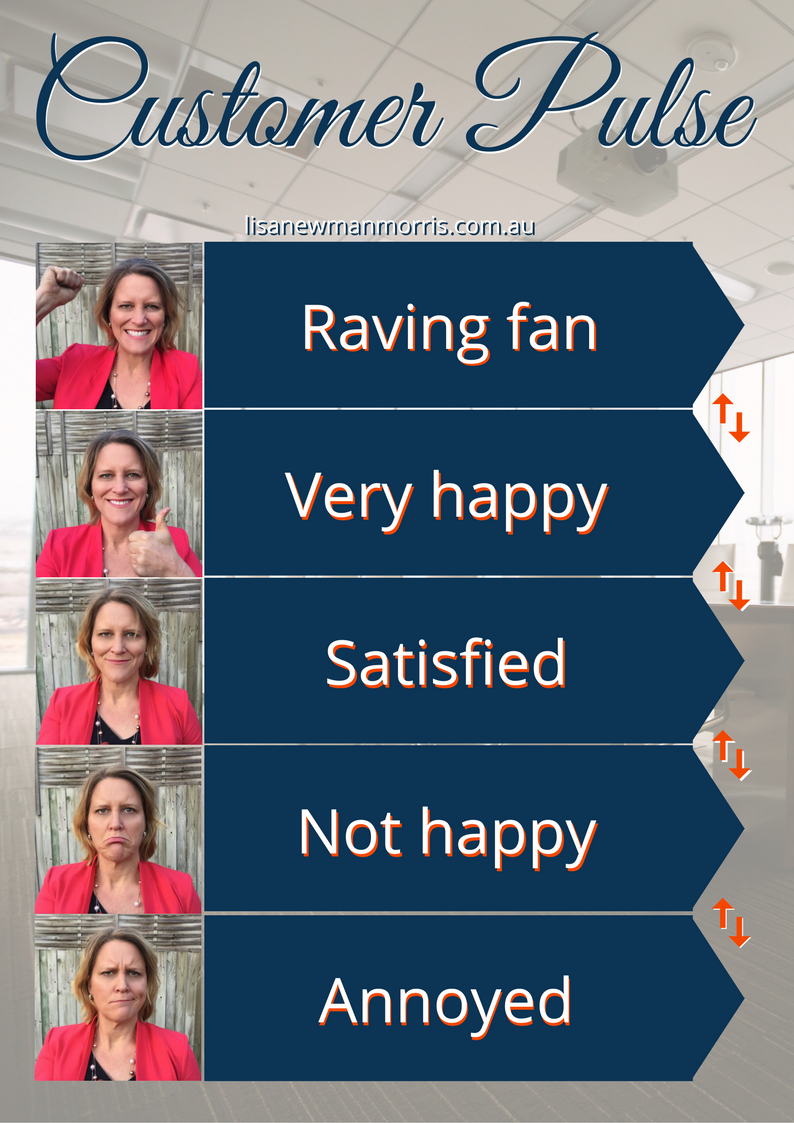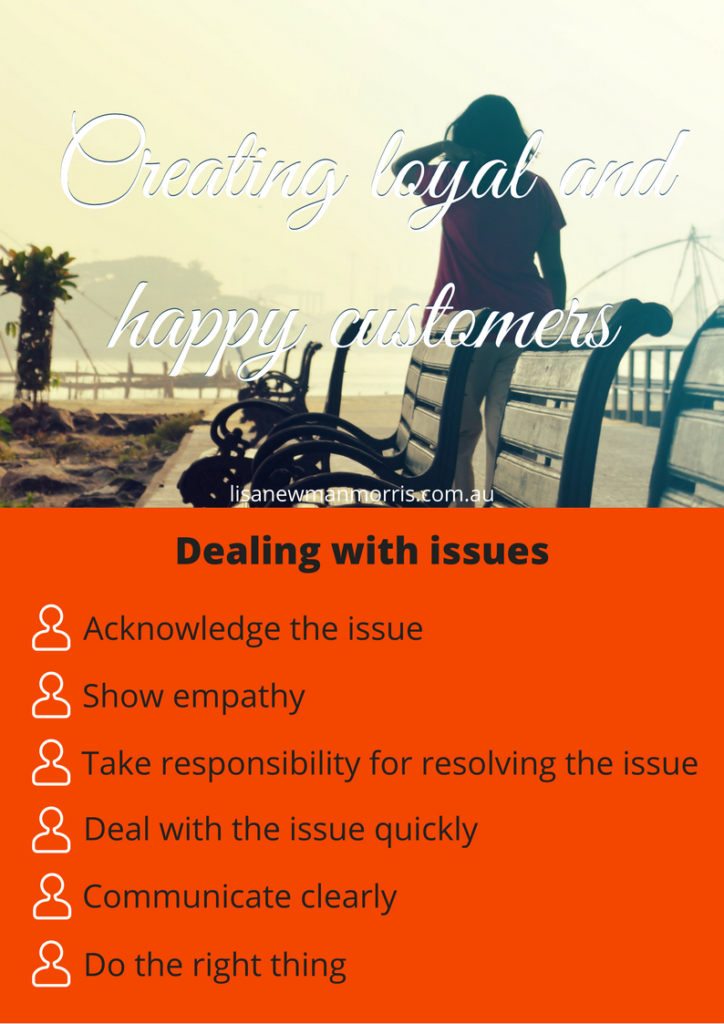Customer loyalty
Customer loyalty can never be over-rated. Having a business filled with loyal customer upon loyal customer is the ultimate goal of any business. In a world where your competitors are just a click away, you need to understand how to look after your customer better than ever before. If you don’t look after your customer, your competitors will!
Despite modern times where access to information is available anywhere, anytime and there is more choice than ever before, research shows customers are willing to stay loyal to a business which looks after them. People are also willing to spend more to get great service.
Related post: 9 lessons for business from the Tour de France
In a world where your competitors are just a click away, you need to look after your customer better than ever before. Share on X
Customer loyalty is essential to business success. You work so hard to gain new customers and you do everything in your power to create long term repeat business. It takes so much more effort, time and money to gain a new customer than it does to keep an existing one.
A loyal customer will not only stay with you for longer but they’ll buy more often, spend more per transaction, give you great reviews and refer new business to you. It’s vital to do everything you can to keep loyal customers happy.
The honeymoon period
It’s easy to be on your best behaviour with a new customer and to go out of your way to do the little things really well. You want to show them how well you’ll look after them and you want their business so you might be more likely to pay attention to small details.
But how well do you keep up this same level of attention to detail and for how long? The difference between expectation and experience is where your customers will decide if they want to keep doing business with you.
It's vital to do everything you can to keep a loyal customer happy. Share on X
Classifying customers
Most businesses classify their customers based on purchase behaviour. You may have a database for your leads or enquiries. Another database for your prospects who have trialed a free product or sample. Another for paying customers or perhaps one for membership type 1 and one for membership type 2. You may even have groups of A grade customers, B grade customers, and so on. but are all your customers in each category really equal?
Have you ever considered classifying your paying customers based on their level of satisfaction instead of their purchase behaviour? Would you even know how to classify your customers based on their current satisfaction with your service? Could you tell how happy or satisfied a particular customer is right at this moment?
The difference between expectation and experience is where your customers will decide if they want to keep doing business with you. Share on X
What makes a loyal customer leave? — The Customer pulse
The Customer Pulse is a concept which explains the different levels of customer satisfaction and why a seemingly happy loyal customer can be there one minute and gone the next.
Customer Pulse is a concept which explains the different levels of customer satisfaction. Share on X
All customers are not created equal! Of course all your customers are different and each has their own needs. But it’s important to realise all customers are not equal when it comes to satisfaction levels. This statement might seem obvious in that some customers will always be more satisfied, more loyal, more in love with what you do but during the lifespan of each loyal customer, they will be moving up and down within the levels of the Customer Pulse.
Related post: Seven reasons why you need to define your ideal client
All customers are not created equal! Share on X
Levels of Customer Pulse
Raving fan
These are your customers who love absolutely everything you do. Their loyalty is unquestioned. They’ll purchase repeatedly and they’ll take up almost any offer you put in from of them. These customers will be happy to do anything you ask of them. They’ll tell everyone they know about you at every chance they can get and will do everything in their power to refer new business to you.
Very happy
Very happy customers will be loyal and they feel very satisfied with the level of service they get from you. They will happily choose your business over the competition. They will also sing your praises and be happy to refer new business to you.
Satisfied
A satisfied customer is generally happy with what they’re receiving right now, but if something better comes along, they would consider going elsewhere. You probably don’t hear much from them, in either a positive or negative sense. There’s a couple of things they believe could be better about the service they receive but generally they’re happy to overlook those.
Not happy
Customers may become unhappy after at least one unsatisfactory encounter with your business. They may let you know they’re unhappy but often won’t tell you. You can be fairly certain however they will be telling their friends about their poor experience.
Annoyed
This level of the customer pulse is when the customer is at their most vunerable point. Usually this level is the last straw and something quite significant has happened or many small things have occurred in succession, without being resolved, to get to this point. At this level, customers will be on the verge of going elsewhere. It may only take one more small and seemingly insignificant thing for them to leave.

What affects the Customer Pulse?
Firstly, it’s important to point out, customers can move either up or down the pulse scale. A raving fan can slip down the scale to become unhappy and an annoyed customer, handled the right way, can move up the scale to become very happy.
The way in which you handle an issue can be the difference between the customer moving up or down the scale. It will be the difference between you having loyal customers and no customers.
The way in which you handle an issue can be the difference between the customer moving up or down the Customer Pulse scale. Share on X
Dealing with customer issues in a small business is a challenging thing. When the expectation doesn’t meet the perceived experience, customers may be unhappy and can become emotional.
In a small business, it can be tempting to want to stick to your guns and enforce policies and terms and conditions. I do agree you should be clear in your terms of service and use these to clearly define the working relationship with your customers. When it comes down to it though, your customers are people with feelings and emotions. They have a choice where to spend their hard earned money. They have chosen to spend their money with your business. It’s important always to find the balance between the policies and the people.
Here are some simple steps which are important to follow, no matter what type of issue arises:
Acknowledge the issue
Let the customer know you understand the problem. Thank the customer for bringing it to your attention and let them know you will do everything you can to resolve the issue as quickly as possible.
Show empathy
The most important thing in a business to customer relationship is trust. Trust can easily be dinted by an expectation not being met. The best thing you can do is express empathy for the frustration, inconvenience or disappointment the customer is rightfully feeling.
Take responsibility
Whatever the issue is, take responsibility as the business owner for resolving the problem. Most people understand mistakes happen. While it can be frustrating as a customer to encounter a problem, most people will forgive and forget as long as someone takes responsibility for finding a resolution.
Deal with it quickly
A quick result is a good result. The faster you can get the issue resolved for the customer, the more likely they will be forgiving.
Communicate with the customer
Keep the customer in the loop and let them know what is being done to help them. Some issues may take time to resolve but as long as your customer is informed, they will usually be understanding.
Do the right thing
While the customer is not always right, it usually pays to do the right thing and solve the issue mostly in the customer’s favour. For your business, that may mean a small cost in the short term, but a small cost to ensure the customer walks away feeling they have been treated fairly, will pay dividends in the long run.
Wrapping up
Business is about people. The way you look after your customers will determine whether or not they choose to continue to do business with you. Always be willing to go above and beyond when it comes to dealing with customer issues and you will create loyal and happy customers who stay with you for a long time.




Great article and oh so true – it’s much easier to retain customers than acquire new ones!
Absolutely thanks Elyssia!
Loved the tips and yes customers are the life blood of any business
Thanks Tracey, yes it’s so important to value and look after the ones you have!
great article – thanks so much! Love the layout of your page too – so easy to read and tweet, and especially love your photos for each satisfaction level!
Thanks so much Jenny. Appreciate the feedback. Yes the tweet plugin is a good one isn’t it! Thanks so much for your support. 🙂
All customers are not created equal! is so true Lisa and once we learn this lesson in business life flows easier.
Thanks for a great series of tips
Thanks so much for your thoughts Linda 🙂
A very important article for any business owner.
Customers are our ‘kings’. Having ‘raving fans’ as customers will pay us back 10 fold.
Raving fans will not only re-order from us, they will refer their friends to us too. In terms of the cost of sales, cultivating ‘Raving Fans’ as customers is worth every cent, as is this article!
Oh so true Jan! Customers are our Kings, absolutely!
Excellent and comprehensive article on customer loyalty. I’d much rather keep working with existing clients than have to hustle for new ones all the time.
Absolutely agree Sandra! Thankyou for your comment.